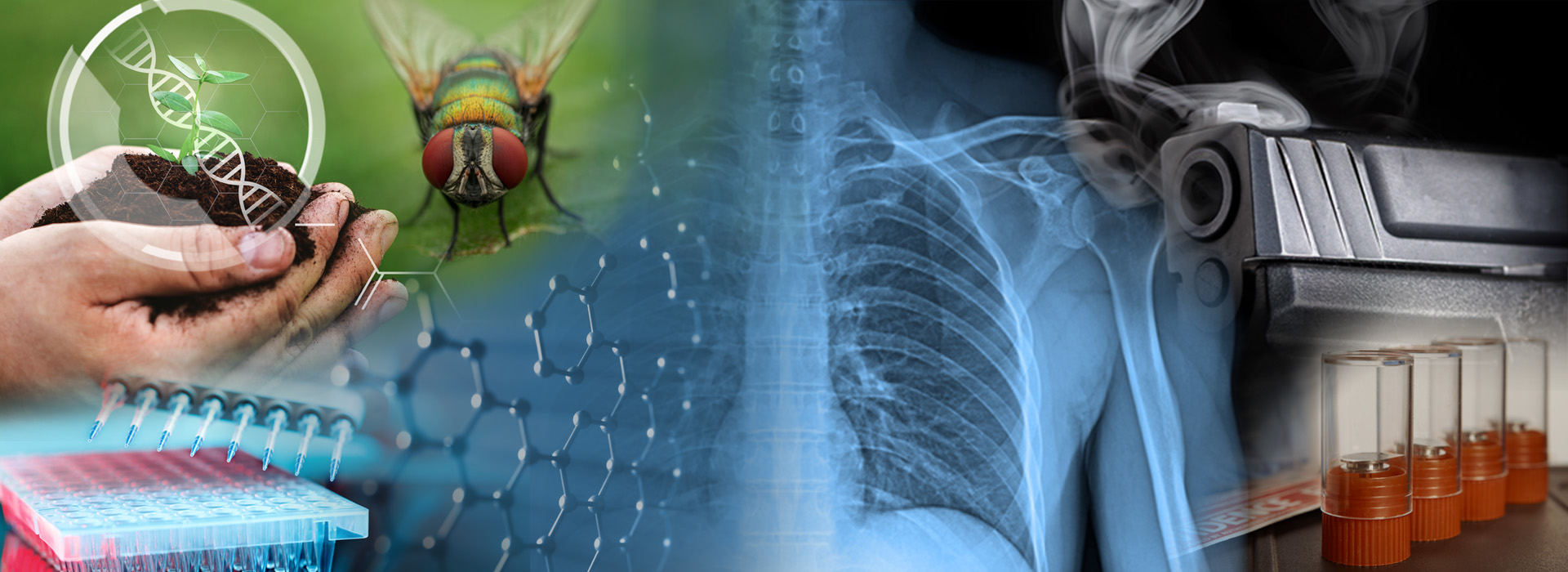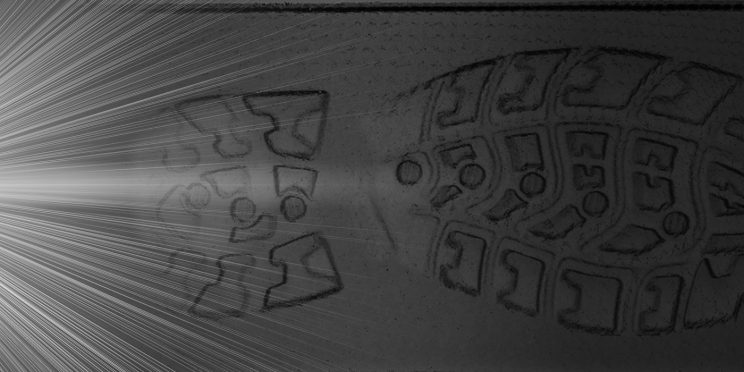Overview
This event originally occurred on September 20, 2022
Duration: 2 hours
The National Institute of Justice (NIJ) has long hosted an annual Forensic Science Research and Development Symposium in which NIJ grantees present their research findings to promote the transition of research into practice. This inaugural NIJ Forensic Science Graduate Research Symposium aims to provide a similar platform for graduate students and early career scientists. The symposium presents an excellent opportunity for new researchers, including current and former NIJ Graduate Research Fellows, to present their work to a broad audience. This virtual symposium will be held on Tuesday, September 20th from 1:00 PM – 3:00 PM Eastern and will include two, one-hour sessions, each featuring three, 15-minute oral presentations followed by a live question and answer session.
Moderator:
Tracey Johnson, M.S.F.S. | Physical Scientist at the National Institute of Justice
Presentation Agenda
Click on the presentation titles below for more information.
Session I
1) Utilizing Soil and Dust eDNA to Assist in Criminal Investigations
Presenter: Teresa Tiedge, M.P.S.
2) Comparison of Skeletal Trauma between Blast Trauma and Trauma from Falls
Presenter: Petra Banks, M.A.
3) Quantitation of Fentanyl and Metabolites from Blow Fly Tissue and Development Effects of Fentanyl on Lucilia sericata
Presenter: Joseph Cox, Ph.D.
Session II
4) Match Probabilities for Next Generation Sequencing Data of Forensic Autosomal STR Markers
Presenter: Sanne Aalbers, M.Sc.
5) Evolution in the Development and Understanding of GSR Analysis via LC-MS/MS
Presenter: William Feeney, Ph.D.
6) Generating Representative 3D Pediatric Healthy Femur Models for Biomechanical Analysis
Presenter: Keyonna McKinsey, M.S.
Presentation Descriptions
1) Utilizing Soil and Dust eDNA to Assist in Criminal Investigations
Presenter: Teresa Tiedge, M.P.S. | National Institute of Justice Graduate Research Fellow, North Carolina State University
Geologic materials, such as soil and dust, are frequently submitted to crime laboratories for either sample-to-sample comparisons or origin prediction. Environmental DNA (eDNA)-based analysis of biological taxa associated with geologic material is an attractive supplemental method to gain additional evidentiary information. The goal of this research is to determine whether bacteria, arthropods, plants, or fungi are the most stable in diverse geologic materials for sample-to-sample comparisons. Five mock evidence items containing soil and dust were collected monthly from two locations in North Carolina over a one-year period. DNA was isolated, amplified using custom indexed primers, and sequenced on the MiSeq.
2) Comparison of Skeletal Trauma between Blast Trauma and Trauma from Falls
Presenter: Petra Banks, M.A. | Doctoral Instructional Assistant, Texas State University
This presentation will compare the physical distribution of skeletal trauma for blast events (explosions) and falls from height to better understand skeletal blast trauma. These data are collected from deidentified decedent case files from coroner’s and medical examiner’s offices. All traumas are recorded by bone element, limb, and specific bone region, with fracture types and associated soft tissue injuries included. The location data are spatially analyzed for significant clustering and compared by event type.
3) Quantitation of Fentanyl and Metabolites from Blow Fly Tissue and Development Effects of Fentanyl on Lucilia sericata
Presenter: Joseph Cox, Ph.D. | Postdoctoral Associate, Florida International University
This study investigates the effects of fentanyl on the development of blow fly (Lucilia sericata) larvae and the ability to detect and quantify the drugs or metabolites present in each stage of the fly’s life cycle. Therefore, we evaluated human tissue fortified with fentanyl at four treatment concentrations, and blow fly larvae were placed to feed on the drug-infused tissue with insects collected at seven time frames. A quick, easy, cheap, effective, rugged, and safe (QuEChERS) extraction method was developed, validated, and applied to extract fentanyl and metabolites from the larva, pupa, pupa casings, and adult flies.
4) Match Probabilities for Next Generation Sequencing Data of Forensic Autosomal STR Markers
Presenter: Sanne Aalbers, M.Sc. | Doctoral Candidate, University of Washington
In this presentation, the presenter will demonstrate the effect of sequence data on match probabilities, an integral measure in DNA evidence evaluations. Results show how multi-locus match probabilities for sequence data, obtained by multiplying over single markers, may overestimate the evidence. The presenter demonstrates that their results become less conservative the more loci they include and that this problem is exacerbated with sequence-based data compared to only length-based data. The presenter also shows how a theta-correction can overcome this problem and confirms the expectation that using appropriate theta values compensate for multi-locus dependencies for sequence data.
5) Evolution in the Development and Understanding of GSR Analysis via LC-MS/MS
Presenter: William Feeney, Ph.D. | Research Scientist, National Institute of Standards and Technology
This work outlines current measures of gunshot residue (GSR) analysis while detailing liquid chromatography with tandem mass spectrometry (LC-MS/MS) work for chromatographic separation and dual detection of both constituents. The results suggest that the proposed approach can be effectively used for probabilistic interpretation and increase the evidentiary value of GSR evidence by combining organic GSR (OGSR) and inorganic GSR (IGSR) data. Some key features within the analysis include increasing the target analytes, testing the method's feasibility by authentic samples, and comparing performance with other analytical techniques. A broad population study tested the performance of this method and monitored the evidentiary value from combining OGSR and IGSR information.
6) Generating Representative 3D Pediatric Healthy Femur Models for Biomechanical Analysis
Presenter: Keyonna McKinsey, M.S. | Graduate Researcher, University of Louisville
Investigating pediatric injury likelihood using computer simulations is currently limited by the imaging technologies available to develop three-dimensional (3D) models. The purpose of this study was to (1) develop a statistical shape model (SSM) characterizing pediatric femur shape and then (2) develop a predictive model to generate representative 3D pediatric femur models for healthy children (age 0-3 years) based on known child characteristics. The predictive model demonstrated good fit (R2 = 0.976) in predicting femur shape (surface coordinates) in the test set (n = 17) and thus, can be used to generate representative 3D pediatric femur models in the absence of computed tomography (CT) imaging.
Related Resources
Funding for this Forensic Technology Center of Excellence event has been provided by the National Institute of Justice, Office of Justice Programs, U.S. Department of Justice.
The opinions, findings, and conclusions or recommendations expressed in this event are those of the presenter(s) and do not necessarily reflect those of the U.S. Department of Justice.
Contact us at ForensicCOE@rti.org with any questions and subscribe to our newsletter for notifications.




